1/15/14 ICTMN.com
When people talk about American Indian women novelists, the names that come to mind are typically Leslie Marmon Silko, Louise Erdrich and Joy Harjo. But there are many worthy yet lesser-known American Indian female fiction writers whose names do not trip off the tongue. Here are some of them:
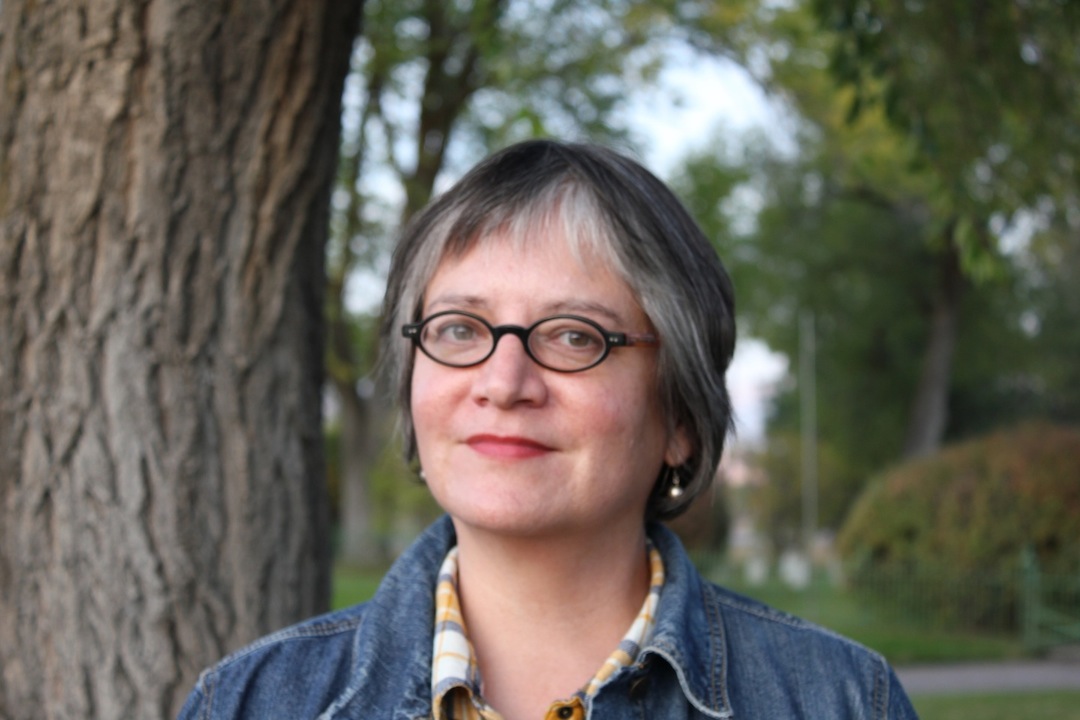
Debra Magpie Earling
Earling, Confederated Salish and Kootenai Tribes of the Flathead Indian Reservation, published her award-winning Perma Red in 2002. The novel recounts the hardships suffered by Louise White Elk, a tale based on the true-life story of Earling’s aunt. Twenty years in the writing, Perma Red tells “a story that has burdened my family for years,” says Earling.
In describing the difficulty of getting the book written, which included a fire that destroyed her first 800-page draft, and getting it published, which included a decision to revise the ending because publishers would not accept a novel in which the protagonist dies—the real Aunt Louise died at 23 of exposure after a car accident—Earling says, “If you have a story that you need to tell and you want it out in the world, there’s some tenacious spirit that we [writers] all have.”
Earling has taught creative writing at the University of Montana, where she is a full professor, for the past 22 years.
Perma Red won the Western Writers Association Spur Award, the Medicine Pipe Bearer Award for Best First Novel, a WILLA Literary Award and the American Book Award.
Earling is working on a proposal for a second novel and hopes eventually to write a novel based on the life of Sacajawea. “She was a traditional woman… some accounts suggest she was as young as 14 years old when she was traveling [with Lewis and Clark]. She saw the true coming of the white man and the movement westward in a way that no one else had the opportunity to see. My biggest dream is to write that novel,” says Earling.
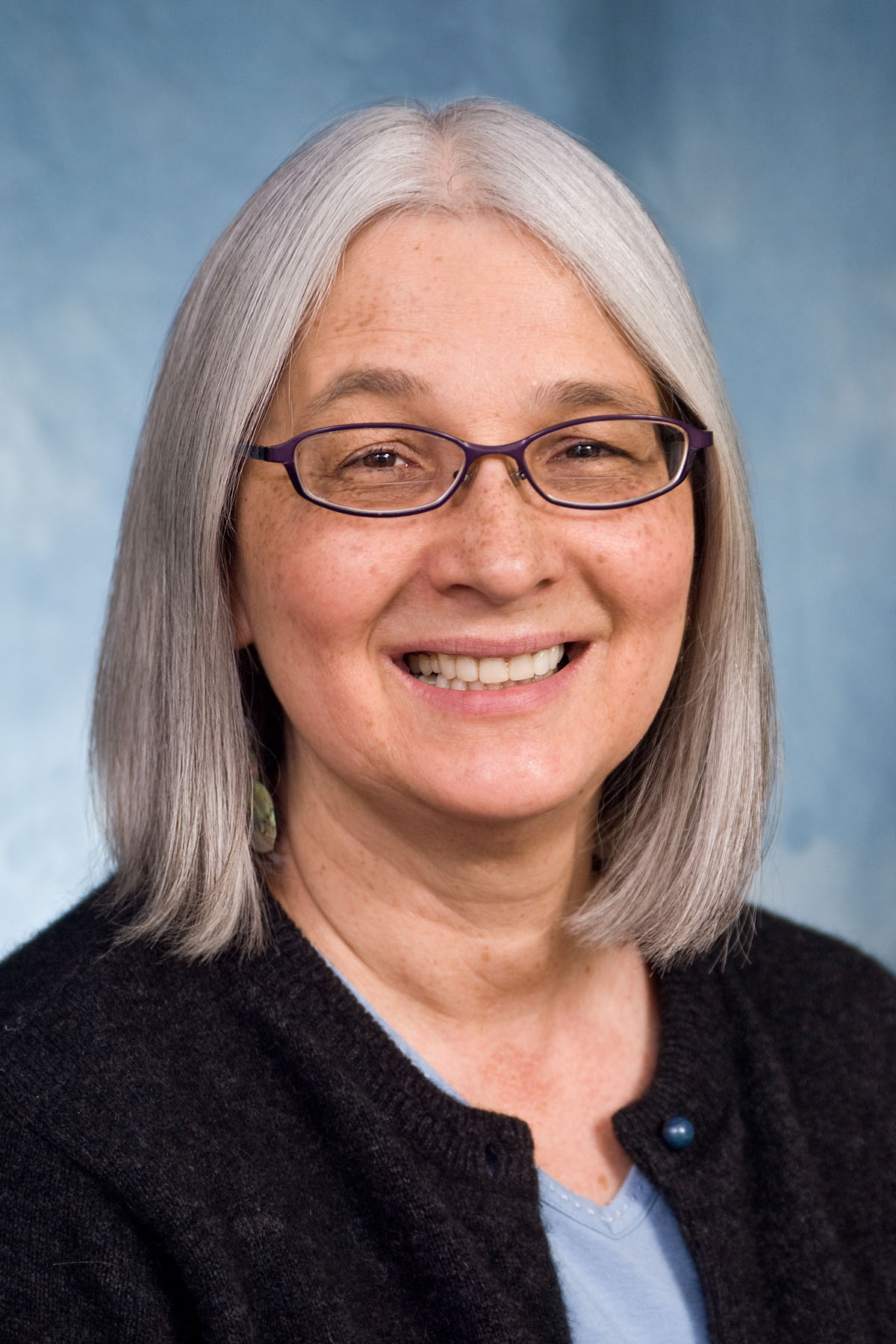
Linda LeGarde Grover
Author of two award-winning book-length collections of interconnected short stories, Grover, Bois Forte Band of Objiwe, is a professor of American Indian studies at the University of Minnesota-Duluth.
Grover’s novels are based on her long-standing academic research interest—looking at how federal and state Indian policies affect Ojibwe families. As an undergraduate, “I began my research on boarding schools in northern Minnesota and that became the foundation for everything I’ve done.”
When she was doing the research for her master’s the chairman of her committee suggested she give fiction a try. “I started out by writing a story, and then another one that was connected to it. I ended up with a box of stories and put together eight of them when the University of Georgia Press sent out a call for manuscripts. That became The Dance Boots,” which was published in 2010 and won the 2009 Flannery O’Connor Award for Short Fiction and the 2011 Janet Heidinger Kafka Prize.
Grover’s second novel-length collection of stories, The Road Back to Sweetgrass, is expected to be published in 2014. In 2008, the manuscript won the Native Writers Circle of the Americas First Book Award. The novel is arranged in four sections, each of which has linked stories that do not follow a linear timeline. The format for both books, says Grover, “seems to me a natural way of Native storytelling that has existed for a really long time. I never thought, ‘I’m going to write a book.’ I said to myself, ‘I think I will write a story.’” The old traditional stories, says Grover, are linked stories that are all part of a big picture. Grover’s research on boarding school families, beginning with the Dawes Act and continuing to the present, is integrated into Sweetgrass, which depicts people who, like herself, grew up during the era of federal termination policy.
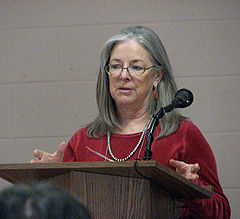
Linda Hogan
Hogan, Chickasaw, won a National Endowment for the Arts fiction grant in 1986, a Guggenheim for fiction in 1990, and a Lannan Award in 1994. She has received the Lifetime Achievement Award from the Native Writers Circle of the Americas, The Wordcraft Circle, and The Mountains and Plains Booksellers Association.
Hogan’s first novel, Mean Spirit (1991) received the Oklahoma Book Award and the Mountains and Plains Book Award, and was a finalist for the Pulitzer Prize the year that honor went to John Updike. Solar Storms (1997) and Power (1999) were both finalists for the International Impact Award.
Hogan’s writing reflects her commitment to cultural conservation and traditional ecosystem knowledge, among other interests. “The spiritual tradition is part of all of my work, my daily life, because it acknowledges the life of the earth and all that lives on it. I do not place any life above other life. I watch how the forest is important to water, both to aquifers and to calling down rain, even to communication with other trees, and the ground it exists in and the Earth is filled with so much life inside it, a terrestrial intelligence we no longer understand. But our people of the past knew,” she says.
In addition to her extensive and highly-praised oeuvre as a poet, Hogan is a renowned nonfiction writer. Her works include Dwellings, A Spiritual History of the Land; and The Woman Who Watches Over the World: A Native Memoir. She is currently working on another novel.
Hogan says of her novels, “I am working on re-telling our past. Still, even with all the research, I am merely a writer trying to put it all together. We have all been brilliant people and it is an incredible world even now, ongoing in its creation and we are participants in it.”
Formerly a full professor at the University of Colorado, Hogan now lives in Tishomingo, Oklahoma, with “a wild mustang who turned out to be a Chickasaw pony” and a wild burro.

Sara Sue Hoklotubbe
Hoklotubbe, Cherokee, grew up in northeastern Oklahoma near the banks of Lake Eucha, the location that is the setting for her mysteries. She worked at the University of Oklahoma for more than 20 years in finance. No wonder the heroine of her novels, Sadie Walela, is a banker!
Hoklotubbe describes her beginnings as a writer: “It was a long journey and I started late in life… I loved English in high school, but when I got to college my focus switched over to political philosophy. Out of college the first thing I needed to do was get a job, which I did in the banking business. That was 1974. I always thought I would do something else—this was just going tide me over for a little while.” Twenty years later she was a VP at the bank.
But the job took “so many hours a day I really couldn’t focus on anything else. Then my husband and I got married in 1997. When we moved [to Hawaii] I couldn’t get a job…. It was a new situation for me.” Given the opportunity to think about what she actually wanted to do, Hoklotubbe decided, “I’d really like to try to write. I was 45. I went to the community college and took some non-credit classes in creative writing. It was just like someone flipped on a switch inside me.”
She soon decided to try to write a book about how badly women are treated in the banking business. The book started out with a bank robbery. “But it just took a 90 degree turn and ended up completely different. I just wanted to tell a good story; I wasn’t trying to write a mystery…. I really liked the way [Tony Hillerman] was able to convey things about the Navajo culture and the way of life, and yet it was in a good story. I wanted to do that for my people. So I guess unconsciously that’s how I ended up writing a mystery.”
Hoklotubbe was named Writer of the Year by Wordcraft Circle of Native Writers and Storytellers in 2004 for her first novel, Deception on All Accounts (Sadie Walela Mystery), 2003. The American Café (Sadie Walela Mystery), 2011, has won several awards, including the 2012 WILLA Literary Award given by Women Writing the West, the 2012 New Mexico/Arizona Book Award for Mystery/Suspense, and the 2012 Wordcraft Circle of Native Writers and Storytellers award for Mystery of the Year. Hoklotubbe’s third mystery, Sinking Suspicions, is expected out in fall 2014, and she’s working on a fourth.
RELATED: The American Café Sizzles With Surprise and Mayhem
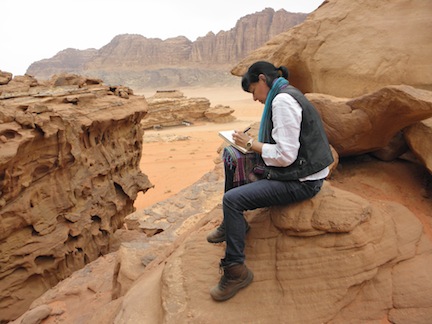
LeAnne Howe
Howe, an enrolled Citizen of the Choctaw Nation of Oklahoma, has an extensive publications list that includes fiction, poetry, screenplays, creative non-fiction, plays and scholarly articles. She is a faculty member in the creative writing program, a professor of English and American Indian Studies, and an affiliated faculty member in the Theatre Department at the University of Illinois, Urbana-Champaign.
“In teaching creative writing,” she says, “I try to advocate for stories that come from someplace inside the students themselves, the stories they carry—how we embody as tribal people our land, our landscape, our community. So in my mind these two prongs of teaching [creative writing and American Indian Studies] work together.”
She is working on her third novel, Memoir of a Choctaw Indian in the Arab Revolts, 1917 & 2011, set in Allen, Oklahoma, and Bilaad ash Sham, which she visited in 2010-2011. Bilaad ash Sham, she explains, was a “region that included what is now Syria, Lebanon, Jordan, all the way over to Jerusalem.” The region was broken up after the Arab Revolt of 1921 when the British and French imposed the borders that created modern Middle Eastern countries. “There’s no such thing as Iraq, there’s no such thing as Syria in the way it’s shaped now. Those were imposed borders. It’s a very similar process to what happens to tribes here in terms of this is your border, this is where you live. These kinds of colonial processes are not dissimilar… I’m well-known for choosing time periods and comparing those time periods through the experience of tribal people, so this is another project in line with Shell Shaker and Miko Kings.”
Shell Shaker (2001), Howe’s first novel, won the American Book Award 2002, Before Columbus Foundation and was a finalist for the Oklahoma Book Award 2003. Howe was chosen as the Wordcraft Circle Writer of the Year for Fiction in 2002. Miko Kings: An Indian Baseball Story (2007) was selected as the Read-in Selection for Hampton University, 2009-2010. Howe is the recipient of the 2012 Lifetime Achievement Award from the Native Writers’ Circle of the Americas.
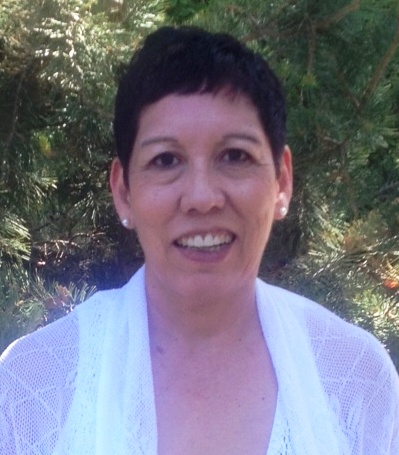
Evelina Zuni Lucero
Lucero, Isleta/Ohkay Owingeh Pueblo, is winner of the 1999 Native Writers’ Circle of the Americas First Book Award for Fiction for her first novel, Night Sky, Morning Star, published in 2000. She is working on her second, Sovereign Seven, a story about Indian gaming.
Night Sky, Morning Star was developed from another novel that made the rounds but did not get picked up. Lucero took the one chapter in that book that everyone liked and built a story around it. The characters are based partly on people she knew in high school in Nevada, but the story is an act of imagination. “I had a lot of fun discovering who the characters were,” she says.
Lucero is chair of the Creative Writing Department at the Institute of American Indian Arts, following a stint as a journalist for tribal and national Indian news publications.
Her second novel is a challenge, says Lucero. “I thought that since I’ve written one novel, the second one should be easy, but it turns out that every book, every set of characters, has its own life. It took me a while to figure that one out.” This book is based on a short story she wrote in the late 1990s about the State of New Mexico’s conflict with the pueblo and Apache tribes over casinos with high stakes gaming. “It was a major conflict between the tribes and the state; eventually the tribes were successful.”
One of the historical figures Lucero encountered when she was doing research on the arrival of the Spanish in New Mexico was a “true life Native person who tricked the Spanish into thinking there were huge kingdoms of gold to the East as part of a plot of the Pueblo peoples to lure them onto the plains where they would travel until they got weary and tired—the idea was to do them in.” The Spanish, who first entered New Mexico in the 1540s looking for land to settle and to find riches, had heard stories of about seven cities of gold. The concocted story fit right into their expectations, Lucero says.
The novel, which Lucero describes as the “intersection of history, myth and the imagination,” marries the whole idea of modern-day casinos to the mythological Seven Cities of Gold, not coincidentally the basis for the name of one of the first casinos in northern New Mexico. “The casinos are another good trick that Native people came up with to lure non-Natives and get some enrichment and benefits out of that whole arrangement,” says Lucero, who hopes to finish the novel during her sabbatical next year.
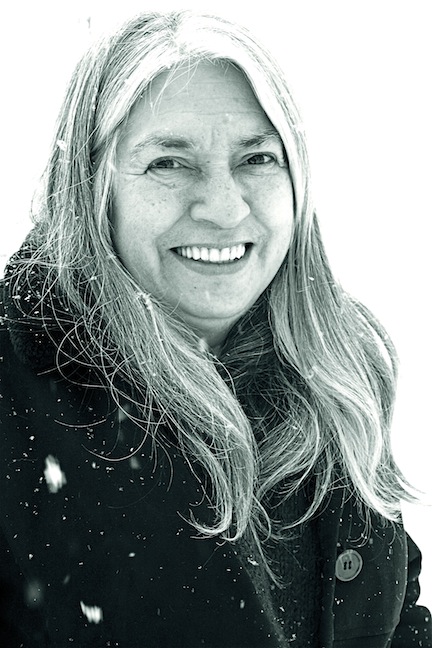
Lee Maracle
It was a dark and stormy night in Sardis, British Columbia, when Lee Maracle, Sto:Loh Nation, discovered she was a novelist as well a short-story writer. “There was a storm at the house and I was terrified,” she says. “I started writing so I wouldn’t hear the thunder. I had 80 pages written before anyone came home and the storm stopped.” She was so engrossed that “a tree fell on my house and I didn’t notice.” So far she has four novels to her credit: Sundogs: A Novel, 1992; Ravensong, 1995; Daughters are Forever, 2002; and Will’s Garden, 2002. She is working on the fifth, which will be a continuation of Ravensong, telling the story of the little child named Celia. “People kept asking what happened to her,” says Maracle.
Maracle teaches in the Aboriginal Studies Program and the Centre for Indigenous Theatre and she is the Traditional Teacher for First Nations House, all at the University of Toronto. She is one of the founders of the En’owkin International School of Writing in Penticton, B.C. In addition to her novels, she has published poetry and several non-fiction works.
Maracle is a member of the Red Power Movement and Liberation Support Movement; her political and social views are integral to her writing, she says. Sundogs is set during the Oka crisis between the Canadian government and the Mohawk Nation, while Ravensong deals with the flu epidemic of the 1950s, and Daughters tells of the healing that is possible within a dysfunctional family.
Among the points Maracle stresses is the importance of readers paying attention to emerging First Nations writers, a few of whom she mentioned. Leanne Betasamosake Simpson, Mississauga Nishnaabeg, has just published Islands of Decolonial Love: Stories & Songs, her debut collection of short stories. Cherie Dimaline, Ojibway and Métis, published her first novel, The Girl Who Grew A Galaxy, last June. Canadian poet Katherena Zermette, Metis, is the first Native woman writer to win the Governor General’s Literary Award for poetry, which she received for North End Love Songs.




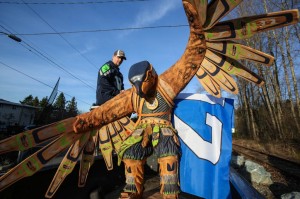






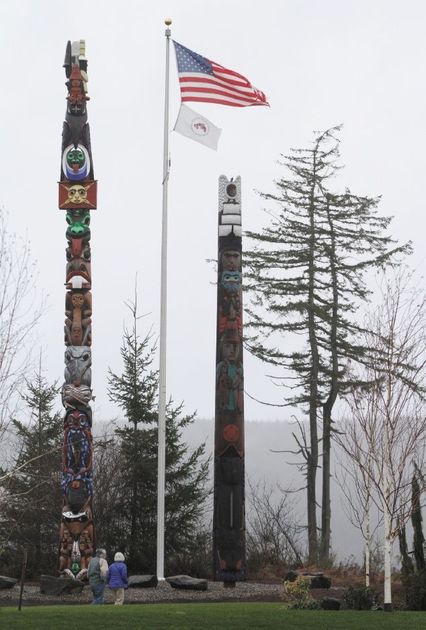

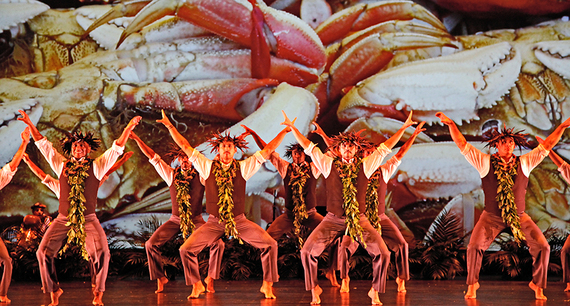
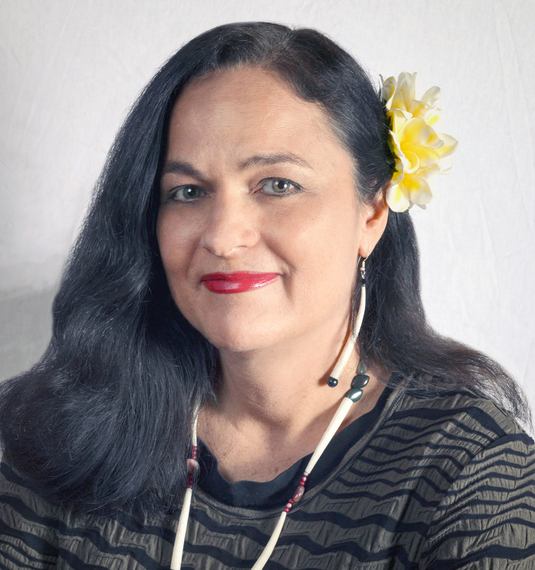 “Our grants go towards helping artists address issues such as cultural equity, land and water rights, food sovereignty, and Native knowledge,” she said. NACF artists received a Bessie Award for Outstanding Dance Production, had an exhibit at the 18th Biennale of Sydney, Australia, and are taking their film to the national festival circuit and PBS. “This kind of recognition inspires others to help keep the arts alive through their own artistic endeavors — or through their financial support,” she added.
“Our grants go towards helping artists address issues such as cultural equity, land and water rights, food sovereignty, and Native knowledge,” she said. NACF artists received a Bessie Award for Outstanding Dance Production, had an exhibit at the 18th Biennale of Sydney, Australia, and are taking their film to the national festival circuit and PBS. “This kind of recognition inspires others to help keep the arts alive through their own artistic endeavors — or through their financial support,” she added.


